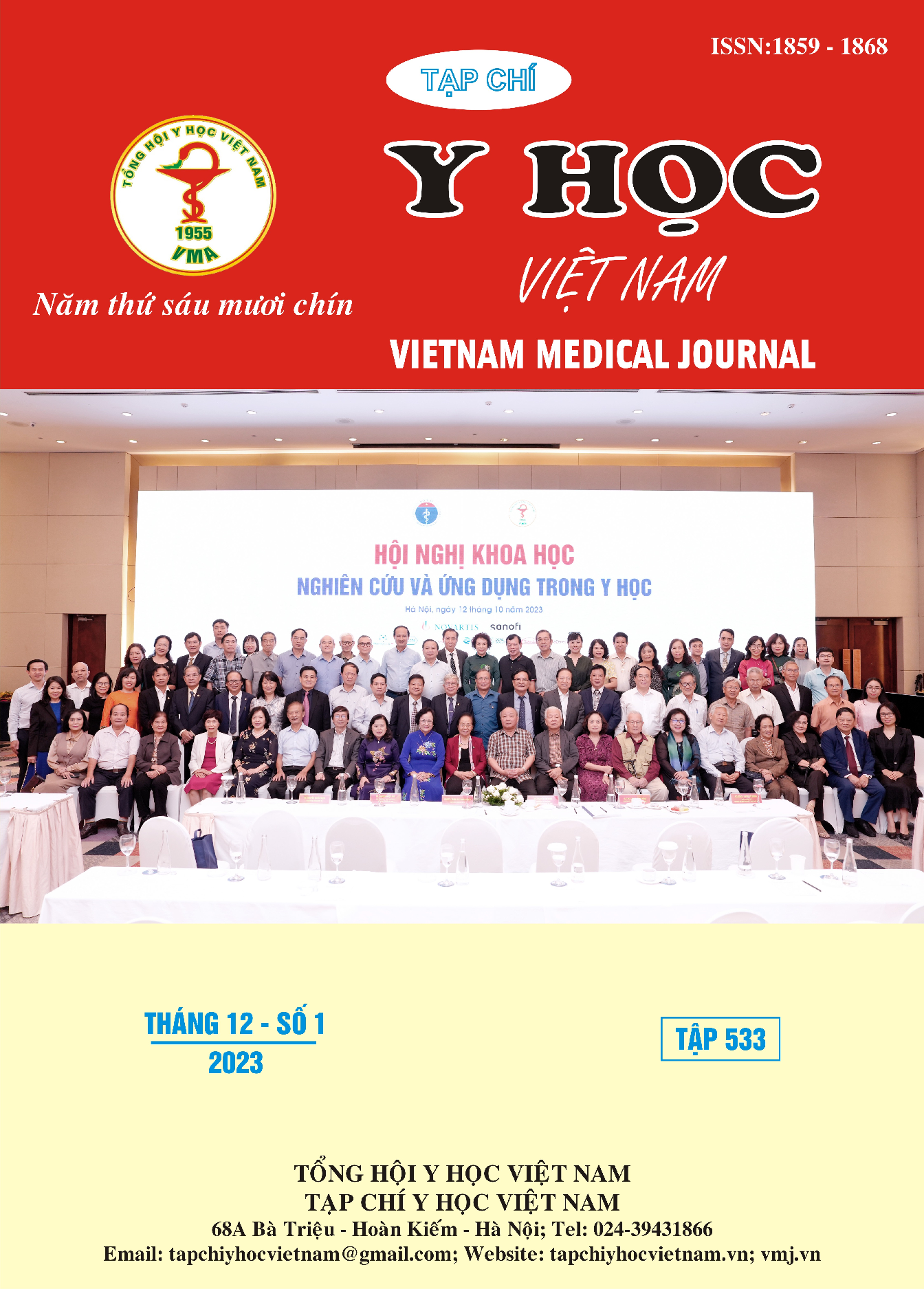SOME FACTORS RELATED TO NUTRITIONAL STATUS IN CHILDREN UNDER 5 YEARS OLD AT HA TINH CITY GENERAL HOSPITAL
Main Article Content
Abstract
Objective: To investigate factors related to nutritional status in children under five years of age at Ha Tinh City General Hospital. Subjects and methods: A cross-sectional study on 420 pediatric patients who visited for examination and treatment at Ha Tinh City General Hospital from January to August 2022. Result: There was a higher risk of malnutrition in children group of less-educated mothers compared to those of high-educated mothers (p<0.05), from families having more than two kids compared to those from families having only one to two kids (p<0.05), of poor and near-poor families compared to those of wealthy families (p<0.05). There was a lower prevalence of malnutrition in children exclusively breastfed for the first 6 months compared to those who are not exclusively breastfed (p<0.05). There was a higher prevalence of malnutrition in children with birth weight less than 2500 grams compared to those with over 2500 grams (p<0.05), with mother’s weight gain during pregnancy less than 8 kg compared to those with mother’s weight gain over 8 kg (p < 0.05). Hypertension & diabetes in mothers could impact on child malnutrition (p<0.05). Conclusion: Factors related to malnutrition in children under 5 years of age include: mother's education level, family income, number of children in the family, exclusively breastfeeding in the first 6 months, the child’s birth weight which is less than 2500g, the mother's weight gain less than 8kg during pregnancy, mother’s diseases during pregnancy.
Article Details
References
2. Viện Dinh dưỡng (2015). “Số liệu thống kê về tình trạng dinh dưỡng trẻ em” http://www.nutrition.org.vn/news/vi/106/61/a/so-lieu-thong-ke-ve-tinh-trang-dinh-duong-tre-em-qua-cac-nam.aspx.
3. UNICEF, WHO, World Bank (2020). Levels and trends in child malnutrition: Key findings of the 2020 Edition of the Joint Child malnutrition estimates. Geneva: WHO, 24 (2), p. 1–16.
4. Indiran Govender, Selvandran Rangiah, RamprakashKaswa, et al (2020). Malnutrition in children under the age of 5 years in a primary health care setting..S Afr Fam Pract.; 63(1): 5337.
5. Phạm Văn Hùng, Trần Hồng Trâm, Đoàn Hữu Thiển, Nguyễn Duy Thái (2022). Thực trạng dinh dưỡng và một số yếu tố liên quan củatrẻ em dưới 5 tuổi tại xã Chí Minh, Tứ Kỳ, Hải Dương. Tạp chí Y học Việt Nam.516 (2), 123-128
6. Phạm Thị Thu, Trương Tuyết Mai, Vũ Văn Thái (2017). “Tình trạng suy dinh dưỡng và một số yếu tố liên quan tới suy dinh dưỡng thấp còi ở trẻ em từ 36-59 tháng tuổi tại 2 xã huyện Tiên Du, tỉnh Bắc Ninh”. Tạp chí Dinh dưỡng và Thực phẩm; 13(1),65-72.
7. Makanjana O, Naicker A (2021). Nutritional status of children 24–60 months attending early child development centres in a semi-rural community in South Africa. Int J Environ Res Public Health;18(1):1–11.
8. Phan Thị Thanh Tâm, Trần Thúy Nga, Trần Khánh Vân và cộng sự (2020).Tình trạng dinh dưỡng và một số yếu tố liên quan tới suy dinh dưỡng thấp còi ở trẻ 24-71 tháng tại một số trường Mầm non huyện Phú Lương, tỉnh Thái Nguyên năm 2020. Tạp chí Y học Việt Nam, 516 (1), 289-293
9. Zhang N, Ma G (2018). Interpretation of WHO guideline: Assessing and managing children at primary health-care facilities to prevent overweight and obesity in the context of the double burden of malnutrition. Glob Heal J. 2018;2(2):1–13.
10. Das JK, Salam RA, Saeed M, Kazmi FA, Bhutta ZA (2020). Effectiveness of interventions for managing acute malnutrition in children under five years of age in. Nutrients;12(1):(116).


